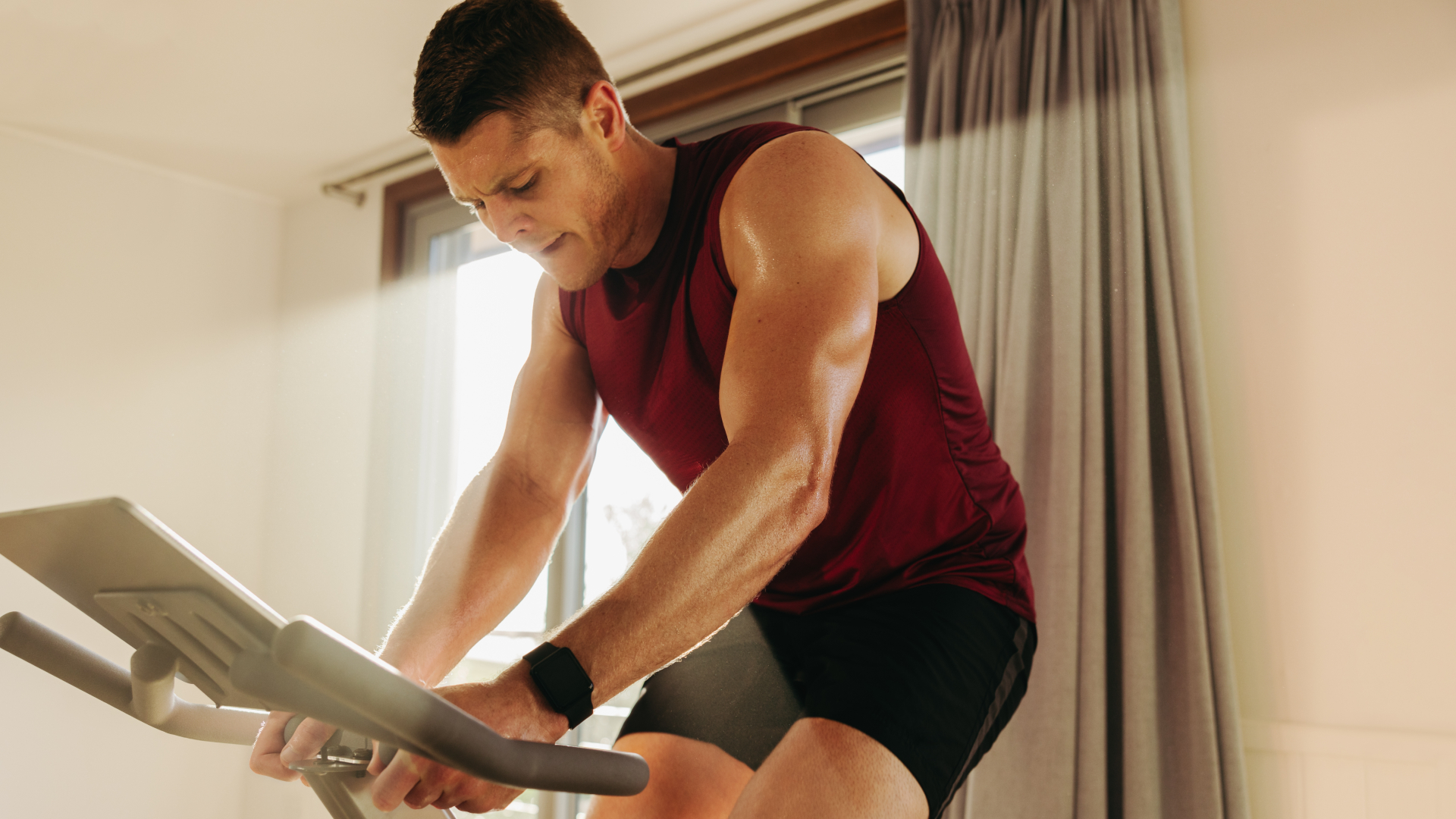I tried a 30-minute indoor cycling workout for runners — here’s what happened
Support your running with indoor cycling

Running is my main sport, and my obsession runs deep, to the point that when I do any other kind of exercise, it’s done to support my running. I do yoga sessions to stretch after runs, strength workouts for runners to reduce my injury risk, and regular indoor cycling to add more cardio into my week, which I hope will make me a better runner.
When it comes to indoor cycling, I usually just jump on one of the best exercise bikes and pedal mindlessly for 30 to 45 minutes at an easy effort, usually while watching a TV show or riding through the virtual landscapes of Zwift.
However, while testing the Wattbike Proton, I found a variety of workouts designed for runners using the bike to support their running. I spoke to the man behind those workouts — Dr Barney Wainwright — to learn more about the benefits of indoor cycling for runners, and discovered that how you use the bike matters, in that you can make your rides more specific to running.
This is done by adjusting the setup of the bike and changing the way that you ride. To put this information into practice I tried one of the running-specific workouts in the Wattbike Hub app; here’s what I learned.
You spend a lot of time out of the saddle
One of the key things for runners to do on the bike is cycle while out of the saddle, so you’re in a more upright position. This enlists more of the muscles used in running, and in particular means that your glutes are more involved, because they can go to sleep when you’re sitting on the saddle.
I found cycling out of the saddle a bit awkward at first, and you need to increase the resistance on the bike to make it feel more natural. It also feels harder than cycling in the saddle, which is a good thing in that you are putting more force through the muscles you’re looking to train for running. Still, I had to be careful not to push too hard so the ride didn’t make me tired for my next run.
As a result, for my first workout, I just did short stints out of the saddle followed by longer periods back in the saddle. I’ll build up the time out of the saddle going forward so I can do it while keeping my effort fairly low.
Sign up to get the BEST of Tom's Guide direct to your inbox.
Get instant access to breaking news, the hottest reviews, great deals and helpful tips.
Move the saddle forward and handlebars up
Changing your bike set up will help to support you in a more upright position. In particular, I found raising the handlebars was important for supporting my body in a comfortable way when I was cycling out of the saddle.
This is a benefit to doing indoor rides to support your running as opposed to outdoor rides — most exercise bikes allow for a wider range of adjustment around the saddle and handlebars than road or mountain bikes.
Get your knee bend right
Wainwright told me that one thing that non-cyclists tend to do on indoor bikes is have the saddle at the wrong height, which means their leg doesn’t straighten enough when pedaling. You don’t want your leg completely straight at the bottom of a pedal stroke, but you should aim for a knee angle of 150-degrees rather than being too cramped.
I checked my saddle position and did indeed find my knee was too bent when cycling, so I raised the saddle height. This created a more comfortable position for riding and also meant that I felt like I was using my calf muscles more on the ride. Normally, I feel like I’m just using my quads.
Don’t worry so much about cadence
Cadence is the number of revolutions your pedals make per minute when you’re riding. If you’re aiming to be a good cyclist, especially with long rides in mind, it’s usually best to have a high cadence of 80 to 100 rpm. That’s what I had usually been aiming for in my rides, even though it felt more natural to me to have a lower cadence.
With the cycling workout for runners, aiming for a high cadence is not emphasized so much, because you’re not aiming to be a good cyclist — you’re aiming to be a good runner. So a lower cadence at a higher resistance that requires more force from your muscles is a good thing. As a result, I stopped worrying about trying to spin the pedals faster.
It’s worth finding out your FTP
FTP is functional threshold power, a measure of fitness which is very important in cycling, because it’s used to determine the power zones you use in training. It’s essentially the maximum power you can put out for an hour, and the test usually used to determine your FTP is cycling flat out for a long period — 20 minutes is the most common.
In most workouts the intervals are set by percentage of FTP, so having an idea of yours is useful. Many exercise bikes and cycling apps will have FTP tests you can follow, or will estimate yours after a few rides. Zwift had an estimate of mine calculated from my rides, rather than one unpleasant test, and I used this for my cycling workout to ensure the intervals were set at the right effort level.
More from Tom's Guide

Nick Harris-Fry is an experienced health and fitness journalist, writing professionally since 2012. He spent nine years working on the Coach magazine and website before moving to the fitness team at Tom’s Guide in 2024. Nick is a keen runner and also the founder of YouTube channel The Run Testers, which specialises in reviewing running shoes, watches, headphones and other gear.
Nick ran his first marathon in 2016 after six weeks of training for a magazine feature and subsequently became obsessed with the sport. He now has PBs of 2hr 27min for the marathon and 15min 30sec for 5K, and has run 13 marathons in total, as well as a 50-mile ultramarathon. Nick is also a qualified Run Leader in the UK.
Nick is an established expert in the health and fitness area and along with writing for many publications, including Live Science, Expert Reviews, Wareable, Coach and Get Sweat Go, he has been quoted on The Guardian and The Independent.
